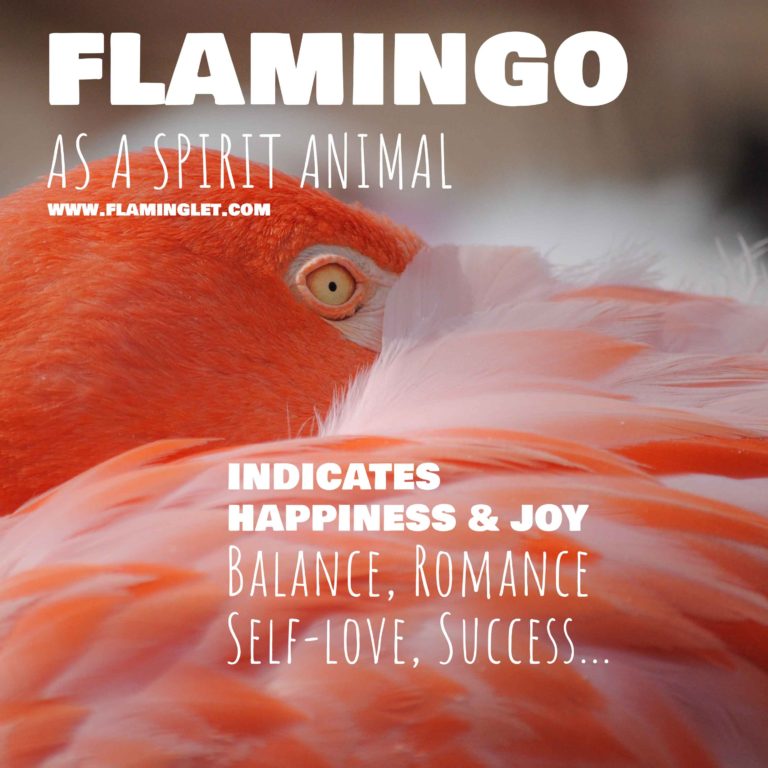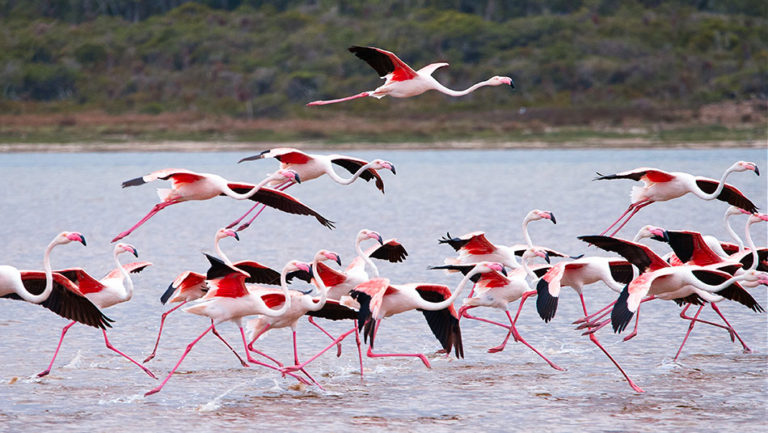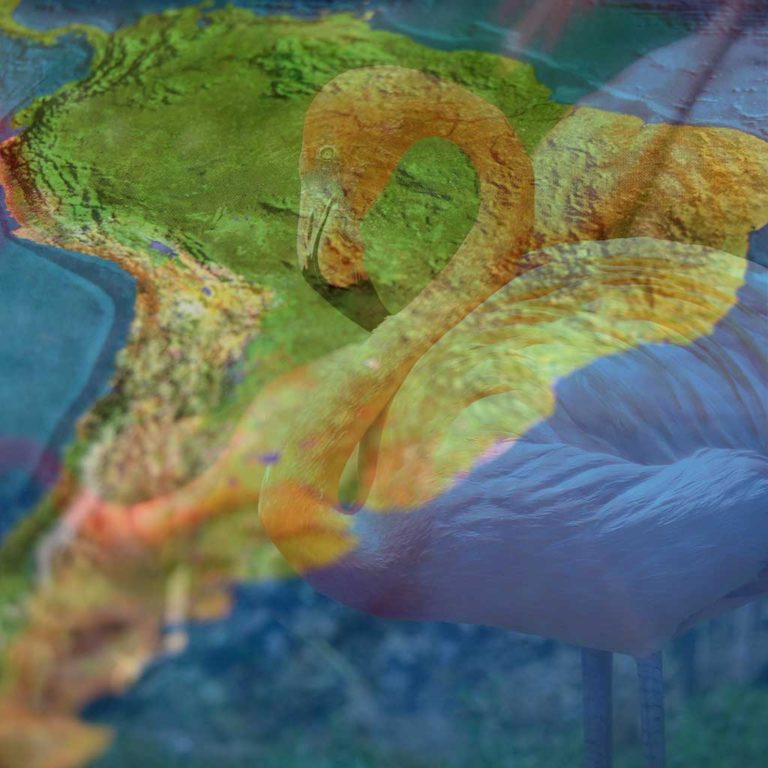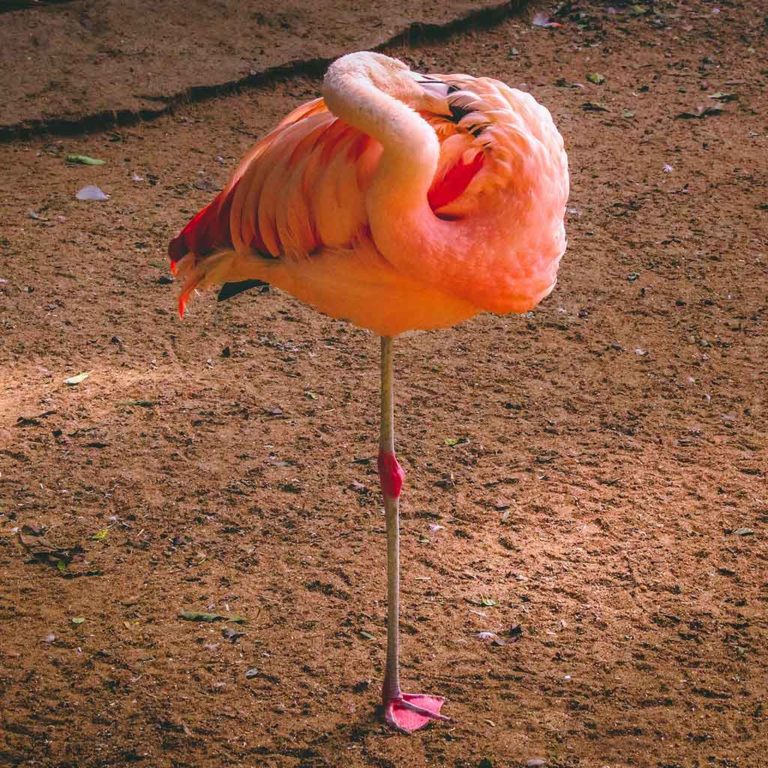Can Flamingos Live In Cold Weather or In Other Extreme Conditions?
Flamingos are mainly living in tropical and subtropical climates, but they are surprisingly tough creatures. Some flamingo colonies live in quite rough conditions.
So, can flamingos live in cold weather? Yes, but there are limits to coldness they can handle. Water freezing temperatures are not anymore suitable for flamingos. Flamingos are water birds, and they need unfrozen waters to find food.
What are the coldest places flamingos live?
Flamingo colonies are living in high-altitude Bolivian Andes. Some of these colonies are found even at altitudes of 4000 meters, where it often gets frosty.
Flamingos found in these altitudes move from wetland to another to adjust their location, according to climate.
What about the heat? Can flamingos stand in boiling water?
Flamingos can stand in near-boiling water and immerse their heads underwater for searching food. They can even drink near-boiling water, even hot saltwater.
Flamingos are often attracted by hot springs and geysers, where the water can be near-boiling.
What are other extreme conditions flamingos known to live?
Flamingos are found around the world inhabiting saline and alkaline wetlands, lakes that grow poisonous plants or microbes, and colonies are living in high altitudes.
Extreme alkaline lake colony
There is one curious Lesser Flamingo breeding location in Tanzania, Lake Natron. This lake is so alkaline that its water damages human skin. More than 2.5 million flamingos seem to find Lake Natron as one of the best places for them to live in Africa.
Volcano flamingos of the Andes
Laguna Colorado in Bolivia is famous locations to spot wild James’ flamingos. Also, Chilean and Andean flamingo species are often present there. This shallow salt lake is surrounded by volcano mountain formations.
Laguna Colorado lake is a red-colored lagoon between vulcanoes. The red color of the lake comes from volcanic minerals and algae living in the water.
Why do flamingos choose to live in extreme conditions?
Flamingos are often living in remote locations and in conditions that would be too extreme for other birds and animals.
So, why they also live in extreme conditions?
Remote places are perfect locations for huge flocks of flamingos. Harsh conditions that flamingos pick, always have plenty of suitable food for them. As long as there is food that they can filter with their bills, remote locations work just perfectly for flamingos. Extreme conditions also don’t have predators.
Flamingos are known to have only a few natural predators, and this may be a result of flamingos favoring living conditions that are difficult for most of the predatory species.
Flamingos are well adapted to tolerate little frost or near-boiling heat. They can tolerate salt and mineral lakes. Flamingos can survive salty environment because of their salt gland that enables them to drink salty water. Also, some algae that make lakes toxic to humans or other species can be an excellent food resource for flamingos.
Flamingos’ different metabolism, protective feathers, and skin structure enable them to live and strive in conditions that would be toxic of impossible for a human.
Are flamingos migratory birds? Don’t they fly to warmer areas for Winter?
Even though flamingos may move and change their location during the year, flamingos are generally classified as non-migratory birds!
Same time, flamingos do also display some migratory behavior. Flamingos are known to move to warmer locations when the weather gets too cold, and then return to their original colonies when the cold season is over.
So, flamingos move around. Why are they then considered non-migratory birds?
Flamingos do not seem to have an inner instinct for moving to warmer locations according to the seasons. Instead, when the weather just gets too cold for them, they get triggered to fly to somewhere warmer. They stay in a warmer location for some time and then return to their original colony area.
During some milder winters, flamingos just stay put and don’t budge with migration. So, they do not display typical seasonal migration-bird behavior. Flamingos need some external reason to start the relocating process.
The main reason for triggering the colony relocation is that the weather just gets too nippy, and this influences how flamingos manage to find food. Also, other changes, as wetland changes, may influence food availability. If there is no more food available, the whole colony can change their location permanently.
So, flamingos display behavior where flamingos stay put and only start relocating when some external condition triggers them to find a better place, for some time or permanently.
This migrate-only-when-needed behavior often gets some flamingos in trouble. Seasons may change quickly, and some unexpected snow blizzards can catch flamingos unaware, or they can find that their favorite spot on the lake is suddenly frozen, sometimes even around their feet while they have been sleeping.
Unfortunately, there are some flamingo casualties every year because of seasonal or quick unexpected weather changes. But in most cases, flamingos are quite tough birds and can survive brief changes in their wild living environment.
P.S. Have you head about flamingos that were found in Siberian Winter? You can read the Siberian Times article here.



